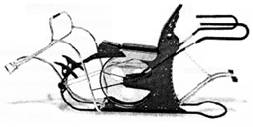题目内容
______ over 90 goals this year, Messi (梅西) has won the Golden Ball for the fourth time.
A.Having shot B.When shooting C.After shot D.When shoot
A
【解析】
试题分析:考查分词走状语用法。本题的动词shoot与句子主语Messi之间构成主动关系,使用现在分词的形式,且梅西进了90球是在他第四次获得金球奖之前就发生的事情,故使用现在分词的完成式来表示。句意:今年进了90多球,梅西第四次得到了金球奖。故A正确。
考点:考查分词做状语
点评:当分词做状语的时候,如果构成分词的动词与句子的主语构成主动关系,就使用现在分词做状语;当二者构成被动关系,使用过去分词做状语。如果分词的动作发生在谓语动词之前,就使用分词的完成式。如果分词与句子的主语没有关系,可以使用状语从句或者独立主格结构。

I love charity(慈善) shops and so do lots of other people in Britain because you find quite a few of them on every high street. The charity shop is a British institution, selling everything from clothes to electric goods, all at very good prices. You can get things you won’t find in the shops anymore. The thing I like best about them is that your money is going to a good cause and not into the pockets of profit-driven companies, and you are not damaging the planet, but finding a new home for unwanted goods.
The first charity shop was opened in 1947 by Oxfam. The famous charity’s appeal to aid postwar Greece had been so successful it had been flooded with donations(捐赠物). They decided to set up a shop to sell some of these donations to raise money for that appeal. Now there are over 7,000 charity shops in the UK. My favourite charity shop in my hometown is the Red Cross shop, where I always find children’s books, all 10 or 20 pence each.
Most of the people working in the charity shops are volunteers, although there is often a manager who gets paid. Over 90% of the goods in the charity shops are donated by the public. Every morning you see bags of unwanted items outside the front of shops, although they don’t encourage this, rather ask people to bring things in when the shop is open.
The shops have very low running costs: all profits go to charity work. Charity shops raise more than £110 million a year, funding(资助)medical research, overseas aid, supporting sick and poor children, homeless and disabled people, and much more. What better place to spend your money? You get something special for a very good price and a good moral sense. You provide funds to a good cause and tread lightly on the environment.
1.. The author loves the charity shop mainly because of _______.
A. its convenient location
B. its great variety of goods
C. its spirit of goodwill
D. its nice shopping environment
2.. The first charity shop in the UK was set up to ____.
A. sell cheap products
B. deal with unwanted things
C. raise money for patients
D. help a foreign country
3.. Which of the following is TRUE about charity shops?
A. The operating costs are very low.
B. The staff are usually well paid.
C. 90% of the donations are second-hand.
D. They are open twenty-four hours a day.
4.. Which of the following may be the best title for the passage?
A. What to Buy a Charity Shops.
B. Charity Shop: Its Origin & Development.
C. Charity Shop: Where You Buy to Donate.
D. The Public’s Concern about Charity Shops.
